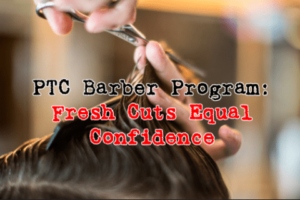Pickens Technical College Collision Repair Pathway: Preparing for the Non-Structural Repair Technician Certificate
One of the certifications you’re preparing to earn after your time in Pickens’ Collision Repair program is the Non-Structural Repair Technician Certification. You’re also working towards the Refinish and Paint Technician Certificate and the Professional Collision Repair Certificate. Passing these three tests will open the door to your career as an auto collision repair expert. Your training in class and in the shop is geared toward passing these exams, which is why instructor Anthony Larson keeps hammering you with concepts you’ll need to be certified.
Earning these certifications is critical to a long career in the collision repair field. Not only will it get you in the door at most auto repair shops, but it also proves to customers you know what you’re doing and provides opportunities for you to open your own shop in the future.
ProLevel Three
The auto workers certification education group I-CAR, which administers the Non-Structural Repair Technician tests, has plenty of recommendations for study and the skills you’ll need to pass the test. I-CAR separates the knowledge areas needed to pass through all three ProLevels and attain certification.
You’re learning most of these skills now in class, but you should pay attention to how I-Car divides its knowledge levels to gauge where you are and where you’ll need to go to complete your certification.
ProLevel 1 is focused on removing and installing trim and hardware, identifying vehicle materials, bolt-on parts, and movable glass, and steel cosmetic straightening, along with plastic part repair. This is called the “Foundational” level.
ProLevel 2, the “Intermediate” level, requires four main competencies: squeeze-type resistance spot welding, adhesive bonding, wind noise, and water leaks diagnoses, and GMA (MIG) weld steel training.
Finally, ProLevel 3, “Advanced,” requires workers be able to remove and install welded and adhesively bonded exterior panels with no damage to the vehicle (not easy), and straighten aluminum cosmetic damage, GMA (MIA) weld verification.
Resources
You have access to study materials and expectations for when you take the test on I-CAR’s website. There, you’ll find the information I’ve just laid out, plus tips on how to be a professional collision repair specialist and pass your exams. It’s an excellent supplement to your studies at Pickens because it focuses solely on the certification exams. Don’t wait until the day before your test to check out I-CAR’s site. It’s very helpful to know exactly what will be on the test.
I-CAR also lets you create a user profile to get access to still more resources, take practice tests, and plan your training time to optimize your learning for the tests. Combined with Larson’s instruction at PTC and your work in PTC’s auto garage, your myI-CAR account will ensure you pass your certification test and hit the ground running in your new career as a collision repair specialist.
The resources are there to ensure that you pass your certification exams and start your career in the auto repair industry.
